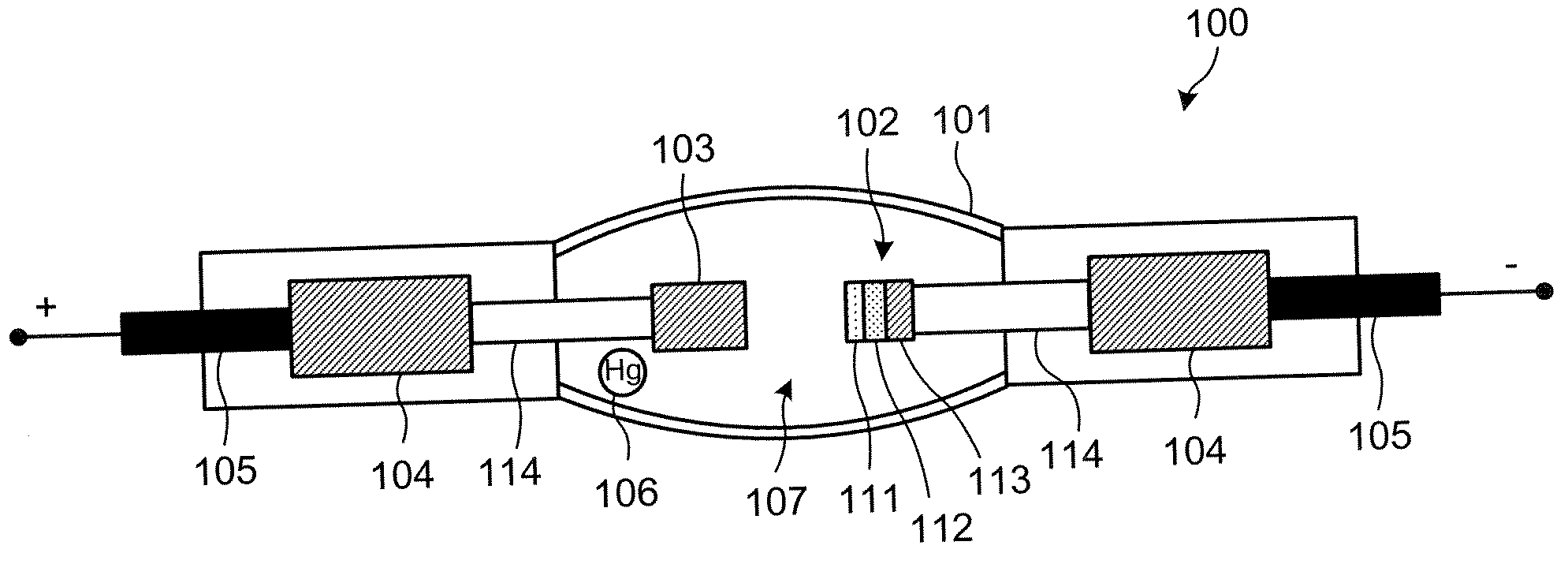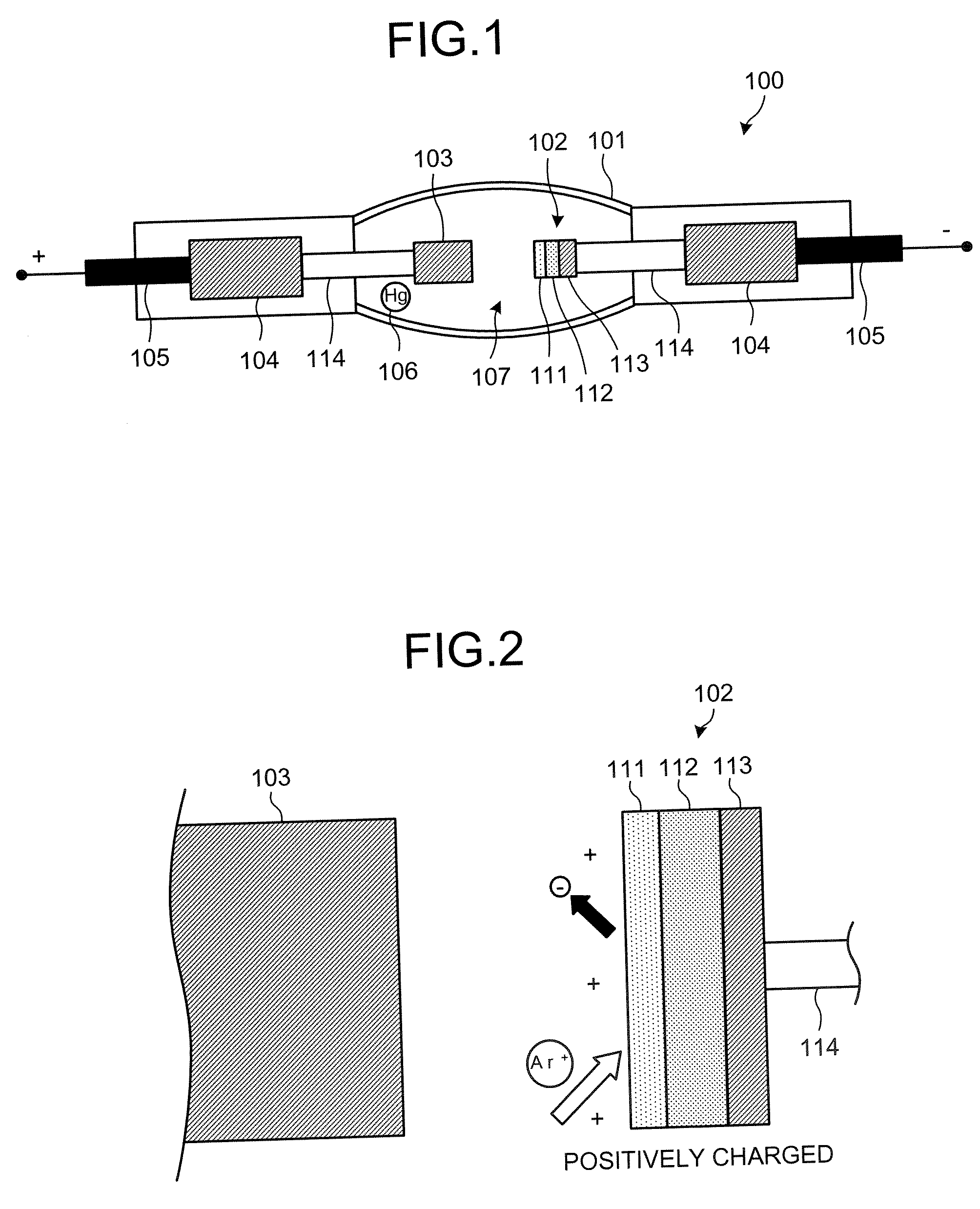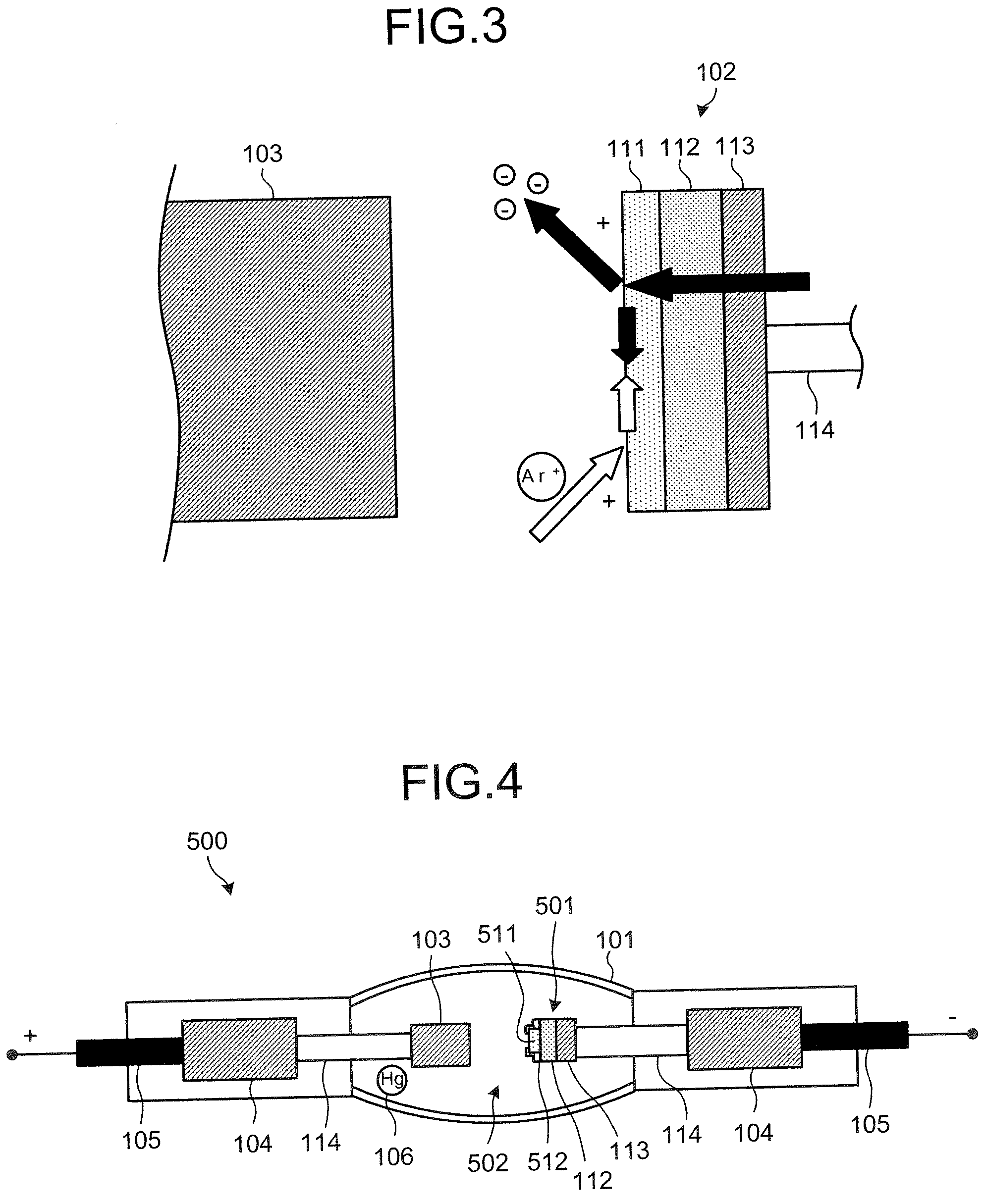Discharge light-emitting device
a discharge light and light-emitting device technology, which is applied in the direction of gas-filled discharge tubes, discharge tubes/lamp details, gas plasma lamps, etc., can solve the problems of insufficient use of cathode lamps, limited life span of discharge lamps, and gradual decrease of lamp efficiency
- Summary
- Abstract
- Description
- Claims
- Application Information
AI Technical Summary
Problems solved by technology
Method used
Image
Examples
first embodiment
[0056] The discharge gas 502 contains argon gas (Ar) and a trace of halogen gas similar to those in the first embodiment above, and the discharge gas 502 further contains a trace of hydrogen. The reason for containing the hydrogen will be explained later.
[0057] The cathode 501 is configured by the electrically conductive substrate 113, the n-type semiconductor layer 112 that is provided on the electrically conductive substrate 113, a p-type semiconductor layer 511 that is provided on a top of the n-type semiconductor layer 112, and an insulating layer 512 that covers the junction of the p-type semiconductor layer 511 and the n-type semiconductor layer 112; and the n-type semiconductor layer 112 and the p-type semiconductor layer 511 form a pn junction. Further, the surface of the p-type semiconductor layer 511 is hydrogen-terminated.
[0058] The p-type semiconductor layer 511 differs from the p-type semiconductor layer 111 according to the first embodiment since the p-type semiconduc...
second embodiment
[0060]FIG. 5 is a cross-sectional view schematically showing the anode 103 and a cathode 601 according to an embodiment different from the present embodiment to explain the discharge light-emitting device 500 of the The cathode 601 includes the electrically conductive substrate 113, the n-type semiconductor layer 112 that is provided on the electrically conductive substrate 113, and a p-type semiconductor layer 611 that is provided on the n-type semiconductor layer 112, and the surface of the p-type semiconductor layer 611 is hydrogen-terminated. The hydrogen-termination of the surface of the p-type semiconductor layer 611 causes the electron affinity to decrease, thereby resulting in the negative electron affinity of the surface of the p-type semiconductor layer 611.
[0061] In the embodiment shown in FIG. 5, the outer envelope 101 (not shown) is filled with the discharge gas 502 containing a trace of hydrogen. Thus, the hydrogen termination occurs and is maintained at the surface o...
third embodiment
[0097] The exposed portion to the discharge space at the junction of the n-type semiconductor layer 912 and the p-type semiconductor layer 911 is insulated in the discharge light-emitting device 1100 according to the present embodiment. Consequently, the electrode 1101 of the discharge light-emitting device 1100 can prevent the formation of short-circuit by the hydrogen termination at the pn junction. Further, the electrode 1101 of the discharge light-emitting device 1100 can hydrogen-terminate the p-type semiconductor layer 911 by a trace of hydrogen contained in the discharge gas 1102. Consequently, the electrode 1101 is provided with the hydrogen-terminated p-type semiconductor layer 911 having negative electron affinity as the electron emissive surface. Further, the electrode 1101 works as cathode and anode. Consequently, the similar effect to the discharge light-emitting device 900 of the third embodiment described above can be obtained, and the discharge efficiency is further ...
PUM
 Login to View More
Login to View More Abstract
Description
Claims
Application Information
 Login to View More
Login to View More - R&D
- Intellectual Property
- Life Sciences
- Materials
- Tech Scout
- Unparalleled Data Quality
- Higher Quality Content
- 60% Fewer Hallucinations
Browse by: Latest US Patents, China's latest patents, Technical Efficacy Thesaurus, Application Domain, Technology Topic, Popular Technical Reports.
© 2025 PatSnap. All rights reserved.Legal|Privacy policy|Modern Slavery Act Transparency Statement|Sitemap|About US| Contact US: help@patsnap.com



